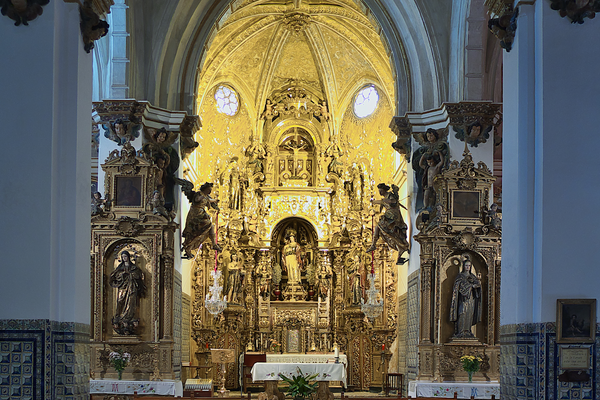Who Wore It Best: The Pope and Head of Russian Orthodoxy’s Different Approaches to Fashion

Pope Francis and Patriarch Kirill: bridging the theological divide, but not the sartorial one. (Photo: Wikimedia Commons/VOA)
This week, Cuba hosted a historic meeting between Pope Francis and Patriarch Kirill of Moscow and All Russia, the leader of the Russian Orthodox church.
For over 1,000 years, relations between the Catholic and Eastern Orthodox churches have been tense—a result of the East-West schism, which began in earnest when Pope Leo IX excommunicated the patriarch of the Eastern Orthodox church in Constantinople (the patriarch returned the favor). Religious disagreement was undergirded by East-West political tensions and, as a result, formal communication between the two branches of Christianity did not resume until the modern era.
Friday’s meeting was wasn’t entirely unexpected, as Pope Benedict XVI sent his congratulations when Patriarch Kirill was elected to his post in 2009, but it made headlines around the world. The meeting highlights also highlighted a more secular division between the two leaders—their fashion sense.
 Pope Francis, right, “dressed up” at his Inauguration. (Photo: Wikimedia Commons/Fczarnowski)
Pope Francis, right, “dressed up” at his Inauguration. (Photo: Wikimedia Commons/Fczarnowski)
Since his election in 2013, Pope Francis’ personal style has been subject to a great deal of commentary. Where his predecessor was widely noted for his embrace of traditional, ornate vestments, Pope Francis has resolutely made the white cassock (formally referred to as “ordinary dress”) his personal brand. In many circles, Pope Francis’ style—widely viewed as an outward expression of his emphasis on humility and service to the poor—is considered quite chic, with Esquire naming him 2013’s best-dressed man. Mary Lisa Gavenas, fashion expert and author of The Fairchild Encyclopedia of Menswear, summed up the reasoning behind the award for Esquire: “Pope Francis understands that menswear is meant to express the character of the man wearing the clothes.”
Some church insiders echo the secular praise, with Cardinal Donald Wuerl explaining to the Washington Post, “Symbols are still very important, but it’s how you use the symbols that make them work for you as opposed to getting too caught up in them.”
The trend towards simplicity has carried throughout the Vatican, although some prelates—and their tailors—seem a little uneasy about abandoning their fur-lined capes, as the Post noted. The archbishops who prefer fancier dress might find Patriarch Kirill’s fashion choices more to their liking.
 Patriarch Kirill at an Eastern service in the Cathedral of Christ the Saviour in Moscow, 2013. (Photo: Wikimedia Commons/www.kremlin.ru)
Patriarch Kirill at an Eastern service in the Cathedral of Christ the Saviour in Moscow, 2013. (Photo: Wikimedia Commons/www.kremlin.ru)
The Eastern Orthodox church maintains several distinct theological and traditional differences from Catholicism, from the type of bread used in Communion to the nature of hell. Differences in belief aside, Patriarch Kirill also differs from Pope Francis in sartorial sense. Although he matched the Pope’s simple vestments for their Friday meeting, wearing an everyday black cossack and white koukoulion (the traditional headdress worn by Orthodox monks), the Patriarch is widely known in Russia for his emphasis on the extravagant. In an interview with Interfax-Religion, noted Russian fashion designer Svetalana Begovatova praised the Patriarch’s taste:
I look at Patriarch Kirill’s clothes and I admire the way he is dressed. He has good taste in cloths [sic]. Few of church leaders before him were dressed like this….For example, the vestment should be blue on the Mother of God feasts, and he wears blue, but this blue is of complex and fashionable tone.
Similar to the Pope, Patriarch Kirill’s fashionable choices are influenced by his beliefs. Interfax-Russia points out that as Metropolitan of Moscow, Kirill emphasized the importance of aesthetics in the church, explaining, “Orthodoxy is not the squalor but beauty of life. Orthodoxy does not compel us to put on bleak black-and-gray-and-brown colors.” The contrast between his aesthetic and Pope Francis’ can be directly observed by comparing Pope Francis’ simple garments in a January, 2016 foot-washing ceremony to the Patriarch’s lavish attire at a Moscow foot-washing ceremony in 2009.
Kirill’s refined taste has caused some controversy in Russia. In 2009, observers noted the Patriarch wearing a Breguet watch valued at over $30,000, drawing public criticism as he preached austerity in the Ukraine. The scandal magnified in 2012, when bloggers found evidence that the watch had been digitally removed from photos on the Russian Orthodox Church’s website.
Friday’s historic meeting between the two religious leaders produced a joint declaration calling for Christian unity, an end to Christian persecution, and interreligious dialogue, among other pronouncements. The declaration did not address matters of fashion, and it seems the two men will continue to maintain their individual styles.















Follow us on Twitter to get the latest on the world's hidden wonders.
Like us on Facebook to get the latest on the world's hidden wonders.
Follow us on Twitter Like us on Facebook